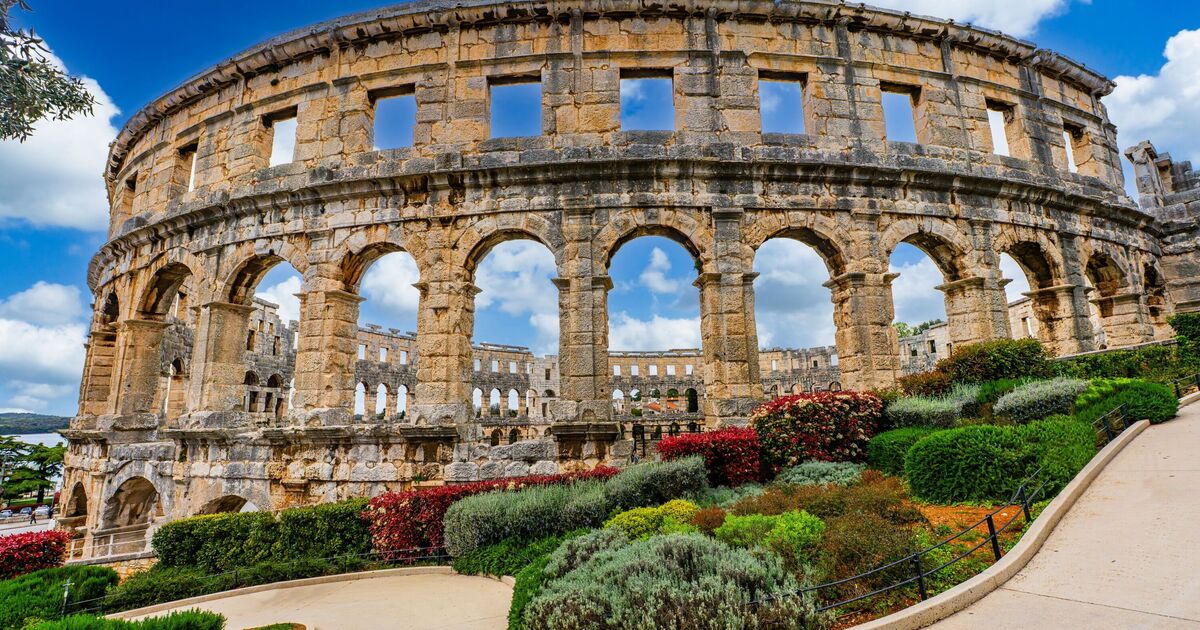

Like the legendary city of Rome, Pula was built on seven hills, a testament to its deep Roman heritage and strategic geographic planning. Today, these hills still form the backbone of Pula’s structure and charm, offering scenic viewpoints, ancient ruins, and quiet residential areas that blend history with everyday life. After seeing Pula pop up on my TikTok earlier this year and wondering where on earth this stunning city could be, I took a quick trip there to see what it had to offer.
I’ve seen people visiting Dubrovnik and Split for their summer holidays, but never Pula, the largest city in Istria, situated in the north of Croatia. It's known for its well-preserved Roman ruins, particularly the Pula Arena, which was arguably one of the most impressive sites I’ve ever seen.
Few landmarks in the world blend ancient grandeur with modern vitality quite like the Pula Arena. Towering over the city and close to the coast for more than 2,000 years, the amphitheatre is one of the best-preserved examples of its kind anywhere in the world.
It was built between 27 BC and 68 AD, and almost the entire structure is still standing. In fact, it’s the only remaining structure of its kind to have all four side towers completely preserved.
Many people associate Roman amphitheatres with the Colosseum in Rome, but the Pula Arena is actually older. Built entirely from the famous white limestone of Istria, the Arena was a masterpiece of Roman engineering, unlike many other ancient structures.
While it may look like some pieces have fallen over the years, the Romans actually took them to build other structures. Able to accommodate around 20,000 spectators, Pula Arena would have played host to gladiatorial battles under the Romans and knights' tournaments in medieval times.
Visiting the amphitheatre solo was incredible, but there are also lots of tours and trips you can book. I explored the enormous structure for just €10 at my own leisure, climbing to the seating and spectating the city.
One of the arena's most unique aspects is its continued use as a performance space. With seating for over 7,000 people today, it regularly hosts concerts, film screenings, and cultural festivals.
There’s a lot to see above ground in the city, but beneath the pavement lies a hidden network of tunnels carved into the city’s limestone. Known as Zerostrasse, the passages date back to the early 20th century and were built as a wartime shelter system. The tunnels are surprisingly spacious, with enough room to walk freely.
In the heart of the old town, overlooking the lively Forum Square, stands one of the most elegant Roman monuments in Croatia; the Temple of Augustus. It was originally dedicated to Emperor Augustus, Rome’s first emperor and Julius Caesar’s adopted heir.
Despite being partially destroyed in a World War II bombing, it was restored and can be viewed in all its glory whilst enjoying a refreshing drink in one of the cafes within the Forum Square.
If beaches are more your vibe, there are a few main areas to visit in Pula for beaches, and a short drive from the city, you can find Hawaii Beach, known for its crystal clear waters.
There are also several hotels nearby, and I stayed at the Park Plaza Histria Pula, which has incredible sea views and is just 10 minutes from Pula itself.
Despite this, Pula remains quite a quiet city, even in the height of summer, when it is visited more by Croatians than tourists. I’d highly recommend visiting Pula all year round, with September temperatures still a comfortable 25C, and October dropping to 20C.